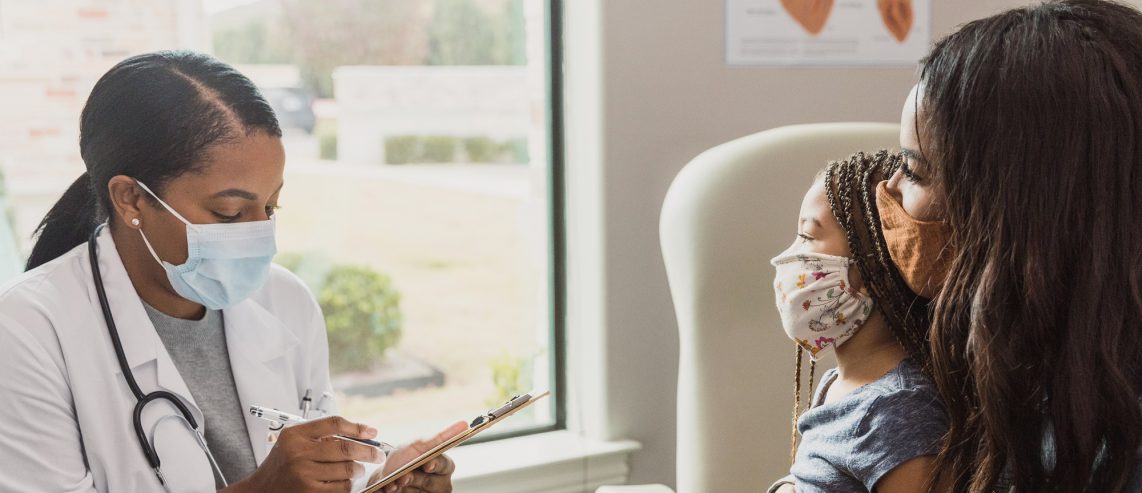If your child has frequent urinary tract infections (UTIs), it could be a sign of another problem. Some children get UTIs because they have vesicoureteral reflux (VUR). VUR is a condition where urine moves backward in the urinary system — out of the bladder and back to the kidneys.
Here’s what you need to know about this relatively common childhood condition.
What Is Vesicoureteral Reflux?
VUR happens when some of a child’s urine flows in the wrong direction. In a child who has VUR, if bacteria enters the bladder, it can then travel up to the kidney and cause a kidney infection. Frequent kidney infections can eventually lead to permanent kidney damage.
According to the American Academy of Pediatrics, between 1% and 3% of all infants and children have VUR. It’s more common in children under two.
Many children can outgrow the VUR as their bladder matures. But others develop frequent UTIs and need treatment, including surgery.
VUR occurs more often in girls than boys. Children are also more likely to have VUR if a parent or sibling had it.
There are two types of VUR:
- Primary VUR — when a child is born with one or both abnormal ureters (the tubes that connect the kidneys to the bladder). The valve between the ureter and bladder doesn’t close well, so urine flows back up toward the kidney. Doctors aren’t sure of the cause of primary VUR, but it may be a genetic condition.
- Secondary VUR — when a blockage develops somewhere in a child’s urinary tract. It might be a small fold of tissue in the bladder neck or urethra. It blocks some urine from leaving the body, so the urine backs up toward the kidneys.
Doctors grade VUR between one (mild) and five (severe). They base the grade on how far the urine backs up and how wide the ureter is. If your child has a lower grade (one or two), they are likely to outgrow VUR in a few years.
Never Miss a Beat!
Subscribe to Our HealthBeat Newsletter!
Thank you for subscribing!
You can now select the specific newsletters you'd like to receive.
You are already subscribed.
Subscribe to more newsletters in our email preference center.
Sorry, an error occurred. Please try again later.
Get Healthy Tips Sent to Your Phone!
Symptoms of Vesicoureteral Reflux
VUR usually doesn’t have any symptoms until it causes a UTI. A UTI is a bacterial infection of the kidneys, the bladder, or both.
Symptoms of a UTI include:
- Frequent, urgent need to urinate.
- Bedwetting and daytime accidents.
- Burning sensation while urinating.
- Blood in the urine.
- Bad-smelling urine.
- Cloudy urine.
- Vomiting.
- Pain in the side or belly (with a kidney UTI).
- Fever and chills (with a kidney UTI).
Other bladder or bowel problems sometimes occur along with VUR. In addition to UTIs, a child with VUR is more likely to have:
- Urinary incontinence.
- Bedwetting problems.
- Urinary retention.
- Constipation. Urinary and bowel problems can be closely related.
Complications of Vesicoureteral Reflux
VUR often goes away on its own with no treatment. But there are reasons why doctors have concern over the condition.
Bladder infections can be uncomfortable, even though they usually don’t cause long-term health problems.
Kidney infections, however, can lead to high fever, chills, and back pain. Frequent kidney UTIs can scar the kidneys. Scarring can lead to high blood pressure and reduced kidney function.
VUR can also cause hydronephrosis, a swelling of the kidneys. It’s caused by the build-up of fluid.
How Do Doctors Diagnose Vesicoureteral Reflux?
Doctors sometimes find primary VUR before birth. It may show up during a routine prenatal ultrasound. The ultrasound may show hydronephrosis and swelling along the urinary tract.
But more often, VUR shows up when children two to three years old and they begin having frequent urinary tract infections. If your child has symptoms of a UTI, you should see your doctor right away.
Your doctor will ask about your child’s symptoms and any family history of VUR. They will use the following tests to diagnose VUR:
- Blood and urine tests — to see how the kidneys are working. These tests will show signs of infection or kidney damage.
- An abdominal ultrasound — to show an image of defects or blockages in the urinary tract.
- Voiding cystourethrogram (VCUG) — this test uses a special liquid to fill the child’s bladder. A technician takes x-rays while the bladder is full and while your child pees. Doctors compare the images to check for problems.
Vesicoureteral Reflux Treatment
Doctors treat VUR different ways, depending on the severity of the problem. Treatments include:
- Observation. If your child has mild VUR, your doctor may opt not to treat it right away. Many children grow out of VUR, usually by the time they’re five years old. Your doctor may schedule regular appointments and imaging tests to make sure the kidneys are growing normally.
- Antibiotics. If your child has a higher grade of VUR, your doctor may recommend that they take a low dose of antibiotics daily. The antibiotic will decrease the chance of them developing a UTI. The hope is that they will outgrow the VUR in the meantime.
- Surgery. If your child continues to get UTIs because of VUR, then your doctor may recommend surgery. Minimally invasive surgery can correct the reflux and prevent urine from flowing back to the kidney.
If your child has secondary VUR, treatment will depend on the cause of the reflux. Surgery may remove a blockage or correct an abnormal bladder or ureter.
Preventing Vesicoureteral Reflux
You can’t prevent VUR. But you can keep your child’s urinary tract as healthy as possible while waiting to see if they outgrow VUR.
To prevent UTIs caused by VUR, make sure your child:
- Drinks plenty of liquids.
- Learns not to “hold it.” Urinating every two to three hours helps keep the bladder clear of bacteria and prevents UTIs.
- Learns to wipe front to back, so as not to spread bacteria from feces to the urinary tract.
- Doesn’t sit long in a wet or soiled diaper.
- Isn’t constipated. Constipation makes it harder for the bladder to empty, increasing the risk of UTIs.
It’s important to see your child’s doctor anytime they have symptoms of a UTI. With proper observation and treatment, most cases of VUR don’t cause lasting harm.
Editor's Note: This article was originally published on , and was last reviewed on .
Sources
National Institute of Diabetes and Digestive and Kidney Diseases, Vesicoureteral Reflux (VUR), Link
Kidshealth.org, Vesicoureteral Reflux (VUR), Link
Urology Care Foundation, Vesicoureteral Reflux (VUR), Link
National Kidney Foundation, Vesicoureteral Reflux (VUR) in Infants & Children, Link
American Academy of Pediatrics, Vesicoureteral Reflux (VUR) in Infants & Young Children, Link
About Pediatrics
From nutrition to illnesses, from athletics to school, children will face many challenges growing up. Parents often will make important health care decisions for them. We hope to help guide both of you in that journey. UPMC Children’s Hospital of Pittsburgh is a national leader in pediatric care, ranking consistently on U.S. News & World Report’s Best Children’s Hospitals Honor Roll. We provide expert treatment for pediatric diseases, along well-child visits, urgent care, and more. With locations across Pennsylvania, Maryland, and West Virginia, you can find world-class care close to home. We also work closely with UPMC Magee-Womens Hospital, a national leader in care for newborns and their mothers. Our goal is to provide the best care for your children, from birth to adulthood and beyond. Visit our website to find a doctor near you.

